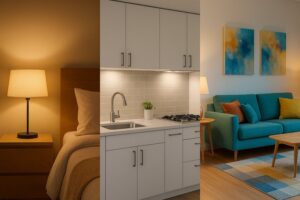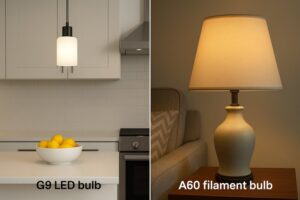You buy a pallet of "good quality" LED bulbs for a project, but soon discover they create the wrong mood. The light feels sterile in living rooms and too sleepy in kitchens, making a well-designed space feel "off."
You transform a space by matching the bulb's characteristics to the room's function. This means choosing the right color temperature (Kelvin) for mood, the right brightness (lumens) for tasks, and high-quality features like CRI for clarity.
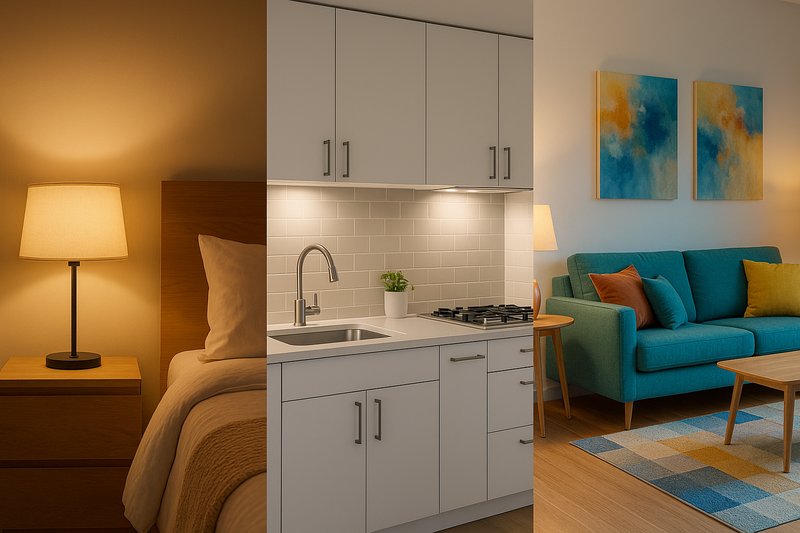
This is a challenge I discuss frequently with my customers, like "Jacky" in America. In his first few years as a buyer, he focused only on getting a good price for a standard 3000K bulb. He thought "warm white" was a safe bet for everything. But he learned a tough lesson: his customers who were homeowners and designers weren't happy. The same bulb that was okay for a hallway was all wrong for a kitchen workspace or a relaxing bedroom. He realized that offering variety and educating his clients on how to choose was just as important as the quality of the bulb itself. Moving from selling a product to providing a solution transformed his business. Let's break down how you can do the same.
Isn't "Warm White" Good Enough for Everything?
You believe that "warm white" is a versatile, safe choice for almost any application. Yet, when you use it everywhere, task areas feel dim and relaxing areas don't feel quite cozy enough, leading to a bland, one-note lighting scheme.
No, a single "warm white" is not enough. Very warm light (2200K-2700K) is for relaxing, while neutral-warm light (3000K-4000K) is for working. Matching the specific color temperature, or Kelvin (K), to the room's purpose is essential for creating the right atmosphere.
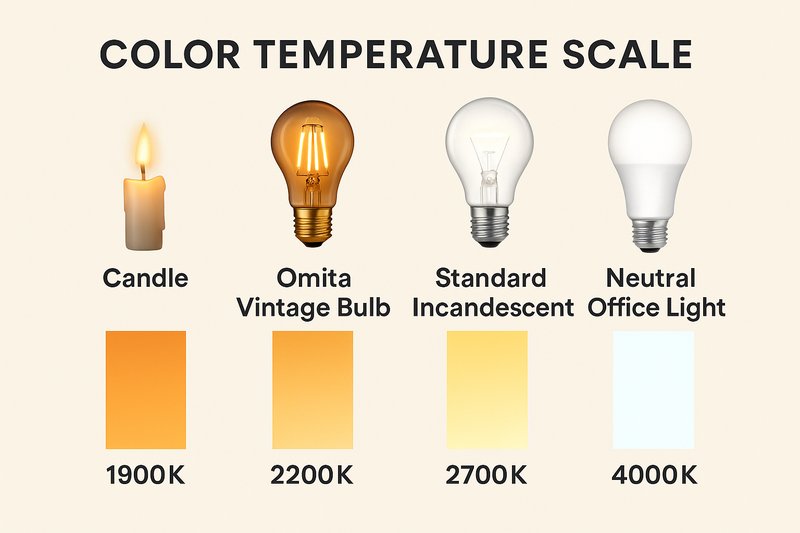
When we talk about the "color" of white light, we are talking about its Color Temperature, measured in Kelvin (K). This is the single most important factor for setting the mood of a room. It's not a subjective measure; it's a precise scale. Think of a piece of metal being heated: first, it glows a deep orange-red (low Kelvin), then yellow, then a neutral white, and finally a bluish-white (high Kelvin). Our brains are hard-wired from millennia of living by sunlight and firelight to react to these colors. Warm, yellow-toned light signals our brain that it's evening and time to relax, promoting melatonin production. Cooler, bluer-toned light mimics midday sun, signaling our brain to be alert and productive. Using the wrong one is jarring to our natural rhythms. For a product manager or buyer, offering a range of Kelvin temperatures is critical for meeting diverse customer needs.
Your Practical Guide to Kelvin
| Kelvin Range1 | Mood & Feeling2 | Best For | Omita Examples |
|---|---|---|---|
| 2000K - 2400K | Vintage, candle-like, intimate | Decorative fixtures, restaurants, cozy living rooms | LED Filament ST64, G95 |
| 2700K | Cozy, inviting, relaxing | Bedrooms, living rooms, hotel lobbies | Standard A60, C35, G4/G9 bulbs |
| 3000K | Neutral, welcoming, balanced | Kitchens, bathrooms, versatile for most spaces | Standard A60, G4/G9 bulbs |
| 4000K | Crisp, alert, clean, modern | Offices, garages, task areas, retail | High-output panels, some G9 options |
How Bright Should My Lights Actually Be?
You are used to buying bulbs based on watts, but now everything is in "lumens." This confusion can lead you to install lights that are either blindingly bright for a space or dangerously dim for a task.
Brightness is measured in lumens, not watts. For general living areas, aim for about 10-20 lumens per square foot. For work areas like kitchens and bathrooms, you need much more—around 70-80 lumens per square foot.
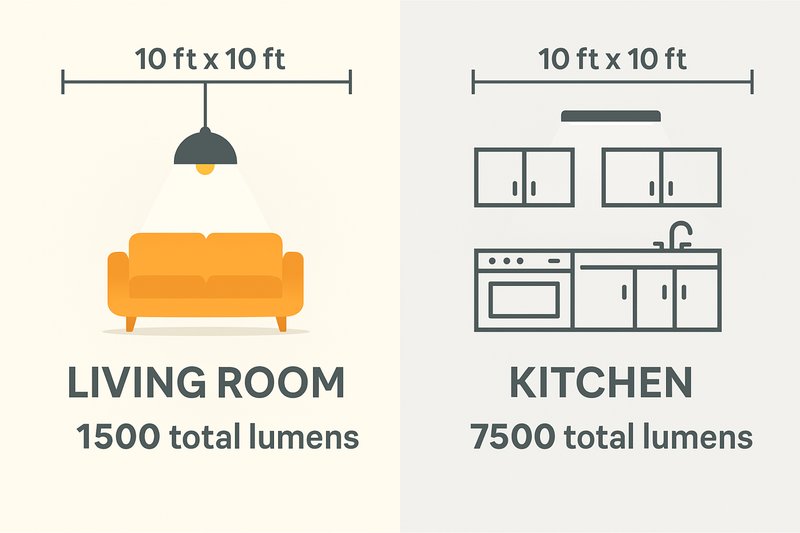
For decades, we associated brightness with wattage. A 100-watt incandescent bulb was bright; a 40-watt was dim. With LEDs, this is no longer true. An LED can produce the same amount of light as a 100-watt bulb using only about 15 watts of energy. Therefore, watts measure energy use, while lumens measure actual light output. Shifting your thinking to lumens is the key to getting brightness right. To figure out how many lumens you need, use this simple formula: [Area of the room in square feet] x [Lumens needed per square foot] = Total Lumens Required. For example, a 150 sq. ft. living room would need about 150 x 20 = 3000 lumens. You could get this from two 1500-lumen bulbs. As a buyer, understanding your customers' needs for different brightness levels allows you to stock the right products, from low-lumen accent bulbs to high-lumen workhorse lights. It's about having the right tool for the job.
Lumen Recommendations by Room
| Room Type | Lumens per Square Foot3 |
|---|---|
| Living Room (Ambient)4 | 10 - 20 |
| Bedroom (Ambient) | 10 - 20 |
| Kitchen (Task Areas) | 70 - 80 |
| Bathroom (Task Areas) | 70 - 80 |
| Hallway | 5 - 10 |
Why Do Colors Look "Wrong" Under Some LEDs?
You've installed new, bright LED lights, but the colors in the room look dull and lifeless. Your red sofa looks slightly brown, and fresh food in the kitchen appears unappetizing. This cheapens the feel of the entire space.
Colors look wrong because the bulb has a low Color Rendering Index (CRI). CRI measures how accurately a light source reveals colors. For true, vibrant colors, always choose a bulb with a CRI of 90 or higher.
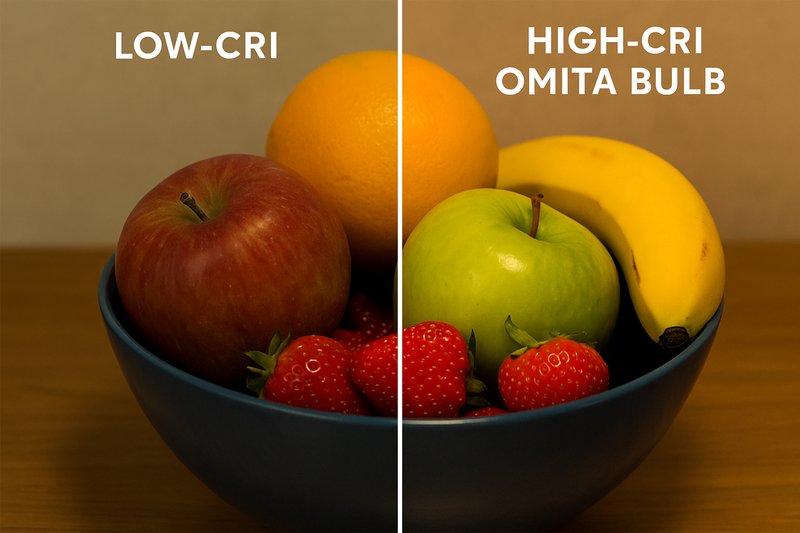
The Color Rendering Index is a quality metric on a scale of 0-100 that a lot of manufacturers don't talk about because their products perform poorly. It measures how well a light source renders colors compared to natural sunlight (which has a CRI of 100). A bulb with a low CRI (typically under 80) might produce bright light, but it's missing key parts of the light spectrum. This means that when the light hits an object, not all color information is reflected back to your eye, so the object looks "off." For a homeowner, this can make their decor look cheap. For a business owner—like in retail or a restaurant—it's disastrous. It can make clothes look unappealing or fresh food look stale. This is a huge pain point. At Omita, we have invested heavily in our LED chip technology to ensure our premium lines have a CRI of 90+, so that colors appear exactly as they should. For any buyer or manager, specifying a high CRI is a mark of quality that your own customers will see and appreciate.
Why Do My "Dimmable" LEDs Flicker and Buzz?
You purchase expensive dimmable LEDs and a dimmer switch, but when you dim them, they flicker, buzz, or drop out completely. This is incredibly frustrating and ruins the very mood you were trying to create with the dimmer.
Most flicker and buzz are caused by an incompatibility between the LED bulb's internal driver and the wall's dimmer switch. To guarantee smooth performance, you need a high-quality bulb and a modern, LED-compatible (CL-type) dimmer.
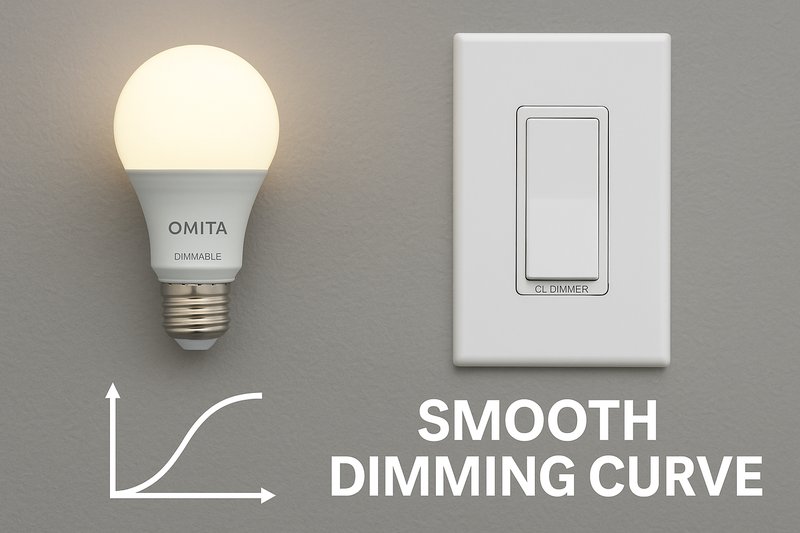
This is one of the most common technical complaints we hear about in the industry. The problem is that LEDs are complex electronic devices, unlike simple incandescent bulbs. An LED's internal driver needs a specific type of signal to dim properly. Older dimmer switches, designed for high-wattage incandescents, "chop" the electrical wave in a way that confuses modern LED drivers, leading to the flickers and hums you hate. The solution has two parts. First, you need to use a dimmer switch that is specifically designed for LEDs, often labeled as a C.L.® (CFL/LED) or "trailing edge" dimmer. Second, and just as important, you need a bulb with a high-quality driver. This is where a reliable manufacturer makes all the difference. We rigorously test our dimmable bulbs, like our popular filament series and G9 bulbs, with a wide range of modern dimmers to ensure they provide smooth, silent, flicker-free dimming from 100% down to 10%. For a product manager, ensuring this compatibility saves you and your customers countless headaches.
Conclusion
Choosing the right LED is simple science. Match Kelvin to mood, lumens to function, and demand high CRI and quality dimming. This transforms any space into the perfect environment for living and working.
-
Understanding the Kelvin Range is essential for choosing the right lighting for different moods and spaces. ↩
-
Exploring how lighting influences mood can help you create the perfect ambiance in your home or workspace. ↩
-
Understanding lumens per square foot helps you choose the right lighting for each room, enhancing comfort and functionality. ↩
-
Exploring ideal lighting for a living room can transform your space into a cozy and inviting environment. ↩


